7 Things I Regret Doing When My Dogs Were Puppies
Throughout my 30 years of life, I’ve cared for a lot of dogs. I guess you can say my parents started me young!
As a little kid, they let me help out and care for our Great Dane and Yorkshire Terrier. Then, as a pre-teen and through my teen years, I had a very active role in raising our six poodles. We became so obsessed with the breed that we actually joined our local chapter of the Poodle Club of America and worked closely with reputable breeders, groomers, trainers, show handlers, and product line developers. We learned a lot. So, by the time I entered adulthood and created my own canine-filled family, I thought: “I’ve got it all figured out!” But, nope, that wasn’t the case!
As people, we’re always faced with new experiences, learning from them, and growing. Now that my Chihuahua, Diego, is 7 and my toy Poodle, Gigi, is almost 6, I think back to the puppy stage and wish I did some things differently. Some of the items on this list are more important than others, but I do regret them all.
1. Not Documenting The Puppy Phase
I joined the blogging world several years ago and, as a result, I now view the world through my camera lens. I spend hours dreaming up creative photo ideas, scouring the web for adorable doggy outfits, and gathering fun props. Plus, I carve out entire days for snapping and editing photos of my pups. But, this wasn’t always the case.
Back when Diego and Gigi were just puppies, I didn’t prioritize taking videos of sweet moments or capturing still photos. I didn’t have the same appreciation for great photography back then. Consequently, if I want to look back at their precious puppy days (which I do, often), I hardly have any videos to watch and I only have a few dark and grainy iPhone snaps. Don’t get me wrong: Smartphones take amazing pics today. But, back then, the quality wasn’t as good.
If I were to do it all over again, I would schedule at least one professional puppy photoshoot for each of my dogs and whip out my phone to take a lot more videos. Remember this: The puppy stage is fleeting, and over before you know it. Document it – you’ll be happy you did!

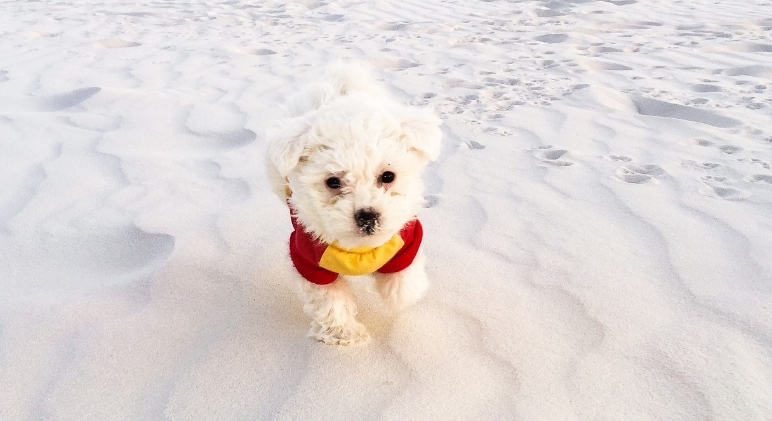
2. Not Taking My Puppies to Obedience School
This is something my family and I did with my childhood dogs, but I skipped with Diego and Gigi. Sure, when I first welcomed my dogs into my house I focused on potty training, leash training, and no-bite training. But, I was so wrapped up in other things that I didn’t really focus on teaching them the basic commands. I knew how to … I just didn’t prioritize it for whatever reason. Those training lessons didn’t happen until they were a bit older. Trust me when I say: Looking at your six month old pup and realizing they still don’t know how to come when called or stay when told is not fun.
Along with command training, obedience school is a great place for dogs to learn socialization skills.
Even if you know how to train your dogs at home, obedience classes help keep you accountable and offer your pup a great foundation for becoming a well-mannered pooch.
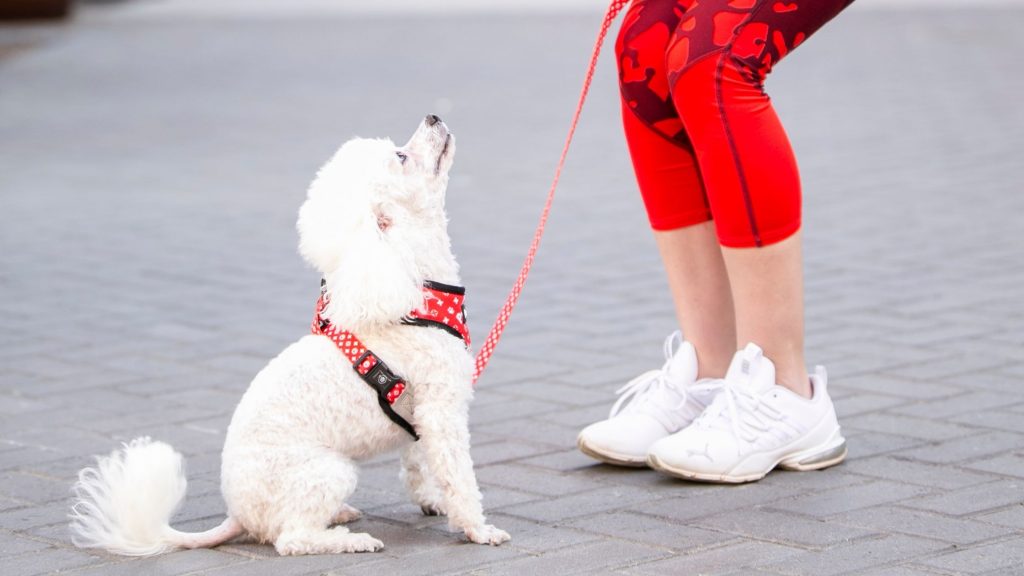
3. Taking Diego to the Dog Park
When I first adopted Diego, I lived in a one bedroom apartment with a tiny balcony. Sure, for my little four-pound Chihuahua it was enough room to run around and play. But, I thought taking him to the nearby dog park would be an amazing experience for him. I figured he would be able to run through the grass off-leash and meet other dogs. Plus, I would be able to meet other dog parents. Truth be told, I really wish I avoided the dog park when Diego was young!
During our time there, Diego picked up some really bad habits. Plus, after getting attacked by another dog (yup, that happened), he became fearful and even aggressive toward other dogs. In my experience, it made the training process harder.

4. Not Making Gigi Have “Alone-Time”
Growing up, Gigi suffered from separation anxiety and, when you get right down to it, it’s my fault. Here’s why:
When I first adopted Diego, I was working as a television news reporter and spent a full eight or nine hours at the studio. From a young age, he learned how to be alone. He knew our routine: Wake up, walk, eat, play, mommy goes to work, mommy comes home from work, walk, eat, play, sleep, do it all again the next day.
By the time Gigi came into the picture, I had left my job in news and started working from home. So, we were together 24 hours a day / 7 days a week. When I would leave the apartment to go food shopping or grab a bite to eat, I would come home to a torn up rug and nail marks in the door (bye-bye security deposit!). She just couldn’t stand being apart.
Through crate training and purposeful alone time, I was able to ease her anxiety. Now, she’s comfortable being at home alone as I run errands or go out to eat. If I could turn the clock back, though, I would have started crate training earlier and made her spend a little time apart from me every day. I interviewed a professional dog trainer about separation anxiety and how you can help your pup. Check it out HERE!
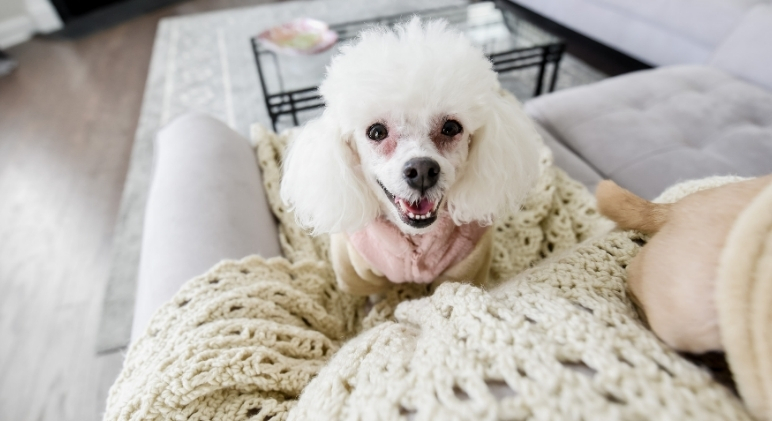
5. Not Focusing on Nutrition Earlier in Their Lives
If you’re a regular reader here at Proud Dog Mom then you know how much I prioritize a healthy diet. I’m proud to feed my pups fresh food filled with quality meats and vegetables. Before transitioning to my current food (I feed The Farmer’s Dog), I was home-cooking. And before that, I fed them kibble.
Growing up, my childhood dogs ate kibble. So, when I welcomed Diego and Gigi into my home, I didn’t think twice about driving to my local pet store and picking up a big bag of processed brown pellets. I remember one night sitting on the phone with my mom and telling her, “My dogs will never share my table scraps or eat human foods. I will be a good dog mom and only give them dog food because that’s what they’re meant to eat! Dog food is for dogs.” Well, now I think back to that ridiculous proclamation and cringe!
Today I know kibble is loaded with carbohydrates, cheap fillers, red-flag preservatives, and other questionable ingredients. It’s highly-processed, filled feed-grade ingredients, has an incredibly low moisture content (which puts our dogs into a constant state of dehydration), and goes rancid quickly (most people don’t store it correctly – you can read more about that HERE).
Offering fresh meats and whole ingredients is more species appropriate. Fresh foods are easier for our dogs to digest, meaning they absorb more nutrients. The added nutrients fuel them with more energy, promote better digestive health, and promot an all-around healthier life.
As a pet parent, I highly encourage you to do your research about diet. Rather than asking, “Why is fresh food so expensive?” let’s ask ourselves, “Why is dry food so cheap?” Check out documentaries like Pet Fooled and watch pet nutrition blogger Rodney Habib’s TedTalk – both incredibly eye-opening.
6. Not Prioritizing Dental Health Earlier in Their Lives
To date, Diego has gone under anesthesia a total of three times for professional dental cleanings. During those cleanings, the vet had to pull a few abscessed and loose teeth. Seeing Diego need extractions has made me incredible passionate about doggy dental care. Now, I brush my dogs’ teeth every single night – I just wish I would have started earlier.
Here’s the deal …
More than 80% of dogs over the age of three reportedly suffer from active dental disease. Unless pet parents take action early on, their dog’s teeth will just worsen with age, eventually impacting their overall health.
It all starts with the mouth. Within just a few hours of eating a meal, plaque can start forming on the teeth. Within just 24 hours, that gummy plaque can accumulate, mineralize, and harden, becoming tartar. Forming above and below the gum line, tartar irritates the gums and can lead to inflammation (AKA gingivitis). Swollen, red, and even bleeding gums are not normal and need to be checked by a veterinarian immediately.
This all causes some pretty stinky dog breath and can leave your pooch in a lot of pain. Eventually, if poor dental health progresses, the teeth can rot, loosen, and likely fall out. But it doesn’t end there. Dogs who suffer from poor dental health typically have weakened and broken down gum tissue. This creates openings in the gums for bacteria to enter the bloodstream. If your dog’s immune system doesn’t fight off that bacteria, it can reach, and eventually affect, the heart. Periodontal disease can also trigger serious health issues in other organs, such as the liver and kidneys.
Along with feeding a healthy diet (no, crunchy kibble doesn’t clean your dog’s teeth), take a few minutes each day to brush your dog’s teeth. HERE is a toothbrushing tutorial to help get you started!
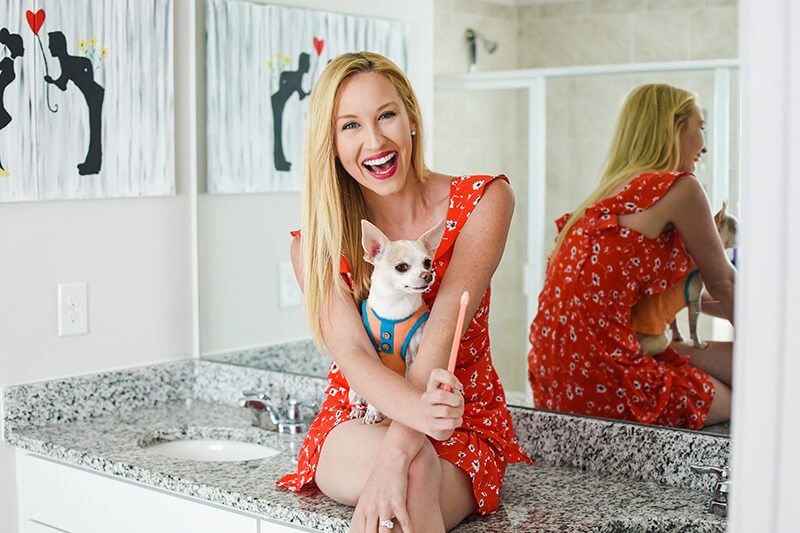
7. Not Understanding The Importance of Mental Stimulation
Along with moving our dog’s body, there’s another type of exercise our pups need. It’s called mental stimulation and, just like it sounds, it literally means you’re exercising your dog’s mind. Growing up, I never heard anyone talk about mental stimulation for my dogs. So, when I first got Diego and Gigi, I didn’t really understand the importance of working their minds. Fast forward to today, it’s something I prioritize every. single. day.
Like people, dogs get bored. And do you know what happens when a dog gets bored? That’s right – they find creative ways to amuse themselves. (In ways we usually don’t like. Think: excessive barking, destructive chewing, digging holes, etc.)
By providing mental stimulation for your dog, you’re helping to:
- Bust doggy boredom
- Put an end to unwanted behaviors that are triggered by boredom
- Lower stress levels and improve mood
- Burn off energy/tire out your dog
- Keep your dog’s mind sharp (this is especially great for aging dogs)
In THIS article, I share six ways you can mentally stimulate your pup!
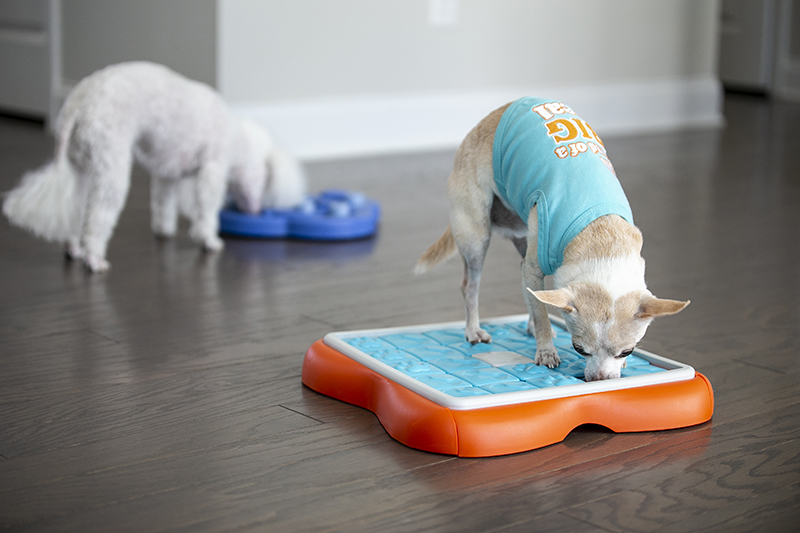
When you think back to the puppy stage, do you wish you would have done anything different? Share your thoughts in the comment section below!
The post 7 Things I Regret Doing When My Dogs Were Puppies appeared first on Proud Dog Mom.
from Proud Dog Mom https://ift.tt/3jiJNU8
Comments
Post a Comment